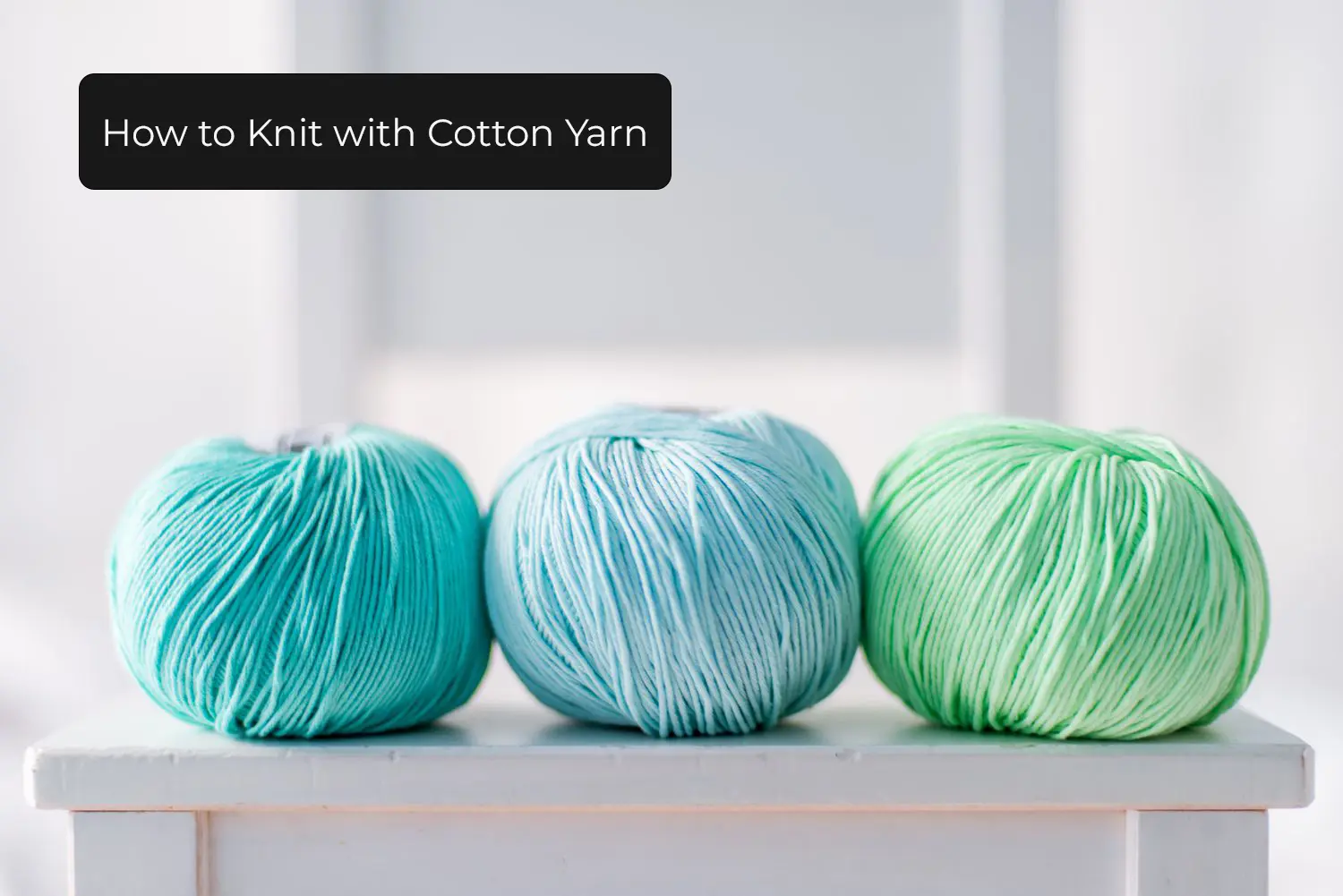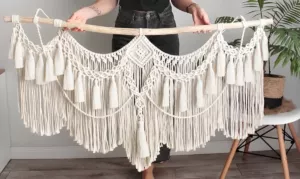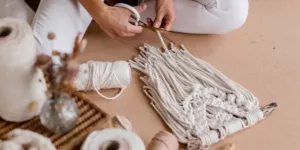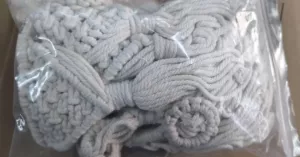How to Knit with Cotton Yarn – Cotton yarn holds a revered spot in the world of knitting, cherished for its versatility, durability, and softness. It’s a plant-based fiber that not only brings a natural, lightweight feel to knitting projects but also boasts of hypoallergenic properties, making it a go-to choice for those with sensitive skin or for crafting baby items. The popularity of cotton yarn stems from its wide availability, diverse range of colors, and ease of care, making it a favorite for both beginner and experienced knitters alike.
One of the unique properties of cotton yarn is its breathability, which is unparalleled when compared to synthetic fibers. This makes it an ideal choice for creating summer wearables and home décor pieces that stay cool to the touch and comfortable against the skin during warmer months. Furthermore, cotton yarn has a distinctive lack of elasticity, which presents both a challenge and an opportunity in knitting. While its inelastic nature can make cotton less forgiving and a bit more challenging to knit with, especially for very tight or intricate patterns, it also translates to superb stitch definition, showcasing textured patterns and intricate stitches beautifully.
The aim of this guide is to demystify the process of knitting with cotton yarn and to arm knitters of all levels with the tips and techniques needed to create stunning, durable projects. Whether you are new to knitting with cotton yarn or looking to refine your skills, this guide seeks to provide valuable insights into working with this wonderfully versatile fiber. From selecting the right needles to mastering tension and stitch definition, we’ll explore strategies to enhance your knitting experience with cotton yarn and elevate the quality of your finished projects.
Understanding Cotton Yarn
Cotton yarn, derived from the fibers of the cotton plant, has long been a staple in the knitting community due to its wide range of properties and benefits. Its diversity makes it appropriate for a vast array of projects, from home goods to wearable accessories. Understanding the types of cotton yarn and their specific characteristics, alongside the benefits and challenges of using cotton, can greatly enhance your knitting experience.
Types of Cotton Yarn
1. Mercerized Cotton:
Mercerized cotton has undergone a chemical treatment to increase its luster and dye affinity. This process not only imparts a silky sheen but also strengthens the yarn, making it more resistant to mildew and shrinkage. Mercerized cotton has a smoother surface, which highlights stitch definition and enhances the overall appearance of your knitted projects.
2. Unmercerized Cotton:
Unmercerized cotton retains the fiber’s natural look and feels, offering a softer and more absorbent quality than its mercerized counterpart. It lacks the high sheen of mercerized cotton but provides a more organic texture, ideal for projects requiring a softer and more natural aesthetic.
Benefits of Using Cotton Yarn for Knitting Projects
1. Hypoallergenic Properties:
Cotton yarn is naturally hypoallergenic, making it an excellent choice for those with sensitive skin or for knitting items for babies and young children.
2. Durability and Ease of Care:
Cotton fibers are known for their strength and durability, resulting in long-lasting knitted projects. They are also machine washable, offering ease of care that is particularly beneficial for frequently used items.
3. Breathability:
The natural breathability of cotton makes it ideal for summer garments and accessories, providing comfort and coolness in warmer months.
4. Versatility:
The wide range of cotton yarn available, from lightweight to bulky, means it can be used for a variety of projects, from delicate lacework to sturdy home goods.
Common Challenges Faced When Knitting with Cotton Yarn
1. Lack of Elasticity:
Cotton’s limited elasticity can be a challenge, as it does not bounce back the way wool or acrylic yarns do. This can make knitting to gauge more difficult and may affect the fit and shape of garments.
2. Weight and Stretch:
Knitted cotton projects can sometimes feel heavier and stretch with wear, particularly in larger items like sweaters or blankets. This requires mindful planning in terms of design and fit.
3. Tendency to Split:
Some knitters find that cotton yarn tends to split while being worked, which can hinder the knitting process and affect the neatness of the finished project. Using needles with blunter tips can help mitigate this issue.
Despite these challenges, the benefits and unique properties of cotton yarn make it a beloved choice in the knitting community. With the right knowledge and techniques, knets can harness the full potential of cotton yarn, creating beautiful, comfortable, and enduring knitted items.
Essential Tools and Materials for Knitting with Cotton Yarn
Knitting with cotton yarn offers a satisfying and practical crafting experience, provided you have the right tools and materials at hand. The nature of cotton yarn means that some tools are better suited than others to help you achieve the smooth, even stitches that characterize beautifully knitted cotton pieces. Here, we’ll explore the recommended knitting needles and additional tools that can significantly enhance your knitting experience with cotton yarn.
Recommended Knitting Needles for Cotton Yarn
1. Material:
- Bamboo or Wooden Needles: These are highly recommended for knitting with cotton yarn. The slight grip they offer helps to manage the typically slippery and inelastic cotton yarn, providing better control over tension and stitch uniformity.
- Plastic Needles: Like bamboo, plastic needles offer a bit of grip which can be helpful. They tend to be very lightweight and can be comfortable for extended knitting sessions.
- Metal Needles: While they are the go-to for many knitters due to their durability and smoothness, metal needles can be too slippery for cotton yarn, particularly for those still familiarizing themselves with the tension required for cotton projects. However, experienced knitters who prefer fast knitting might still opt for metal.
2. Needle Size:
Cotton yarn comes in various weights, so the appropriate needle size will depend on the yarn weight specified on the label. Generally, smaller needles that create tighter stitches are preferred to prevent the final product from stretching out of shape.
Additional Tools That Enhance the Knitting Experience with Cotton Yarn
1. Stitch Markers:
Cotton yarn’s smooth texture makes it easy for stitches to accidentally slip off needles, especially for beginners or while working intricate patterns. Using stitch markers can help you keep your place and mark pattern repeats or crucial points like the beginning of a round.
2. Row Counters:
Given that cotton lacks elasticity, it’s crucial to maintain consistent row counts to ensure your project keeps to the desired dimensions. A row counter, whether digital or manual, can be invaluable in keeping track of your progress.
3. Point Protectors:
To prevent stitches from slipping off your needles when your project is at rest, consider using point protectors. Besides safeguarding your work, they help maintain your project’s tension between knitting sessions.
4. Knitting Gauge Ruler:
Due to the importance of gauge in ensuring that your finished project meets the intended size and fits properly, a knitting gauge ruler becomes a crucial tool. This is particularly vital when working with less elastic yarn like cotton.
5. Crochet Hook:
A small crochet hook is handy for picking up dropped stitches, a common occurrence with slippery cotton yarn. It’s also useful for weaving in ends upon completing your project.
Techniques for Knitting with Cotton Yarn
Knitting with cotton yarn requires some specialized techniques to ensure your project turns out looking professional and wears well over time. Here are some pointers on achieving optimal results when dealing with cotton yarn.
Adjusting Tension for Optimal Results
- Looser Tension: Since cotton yarn doesn’t have much give, working with a slightly looser tension than you might with wool helps prevent the fabric from becoming too stiff. If you’re a tight knitter, consider going up a needle size to help in this regard.
- Consistent Pressure: Practice maintaining consistent pressure on the yarn as you knit. Uneven tension can lead to inconsistent stitch sizes, which are more noticeable with cotton yarn.
- Rest Periods: Because cotton yarn can be harder on the hands, take breaks to avoid straining your hands and wrists, which can also affect your tension.
Best Cast-On and Bind-Off Methods for Cotton Projects
- Cable Cast-On: This method creates a firmer edge that can counteract cotton’s tendency to stretch out. It’s also neat and quite durable, making it a good choice for items like dishcloths or market bags.
- Long-Tail Cast-On: The long-tail cast-on is versatile and provides a stretchy edge that can accommodate the inelastic nature of cotton and prevent it from being too tight.
- Stretchy Bind-Off: When binding off cotton projects, using an elastic method like the “lace bind-off” or “Jeny’s Surprisingly Stretchy Bind-Off” can be helpful, especially for edges that need to retain some flexibility, such as necklines or sleeve cuffs.
Tips for Maintaining Consistent Gauge
- Swatching: Always knit a gauge swatch before starting your project, wash, and block it just as you would your finished piece. This will let you see how the yarn behaves and if your gauge changes after washing.
- Checking Gauge Regularly: Because cotton yarn can lead to hand fatigue which may change your tension, check your gauge as you work on your project, not just in the swatch.
- Blocking Techniques: Since cotton is prone to growing when wet, proper blocking is essential. Wet block your swatch and projects by washing and then laying them flat to air dry, shaping them to the desired dimensions.
Techniques to Prevent the Edges from Curling
- Garter Stitch Edges: Adding a border of garter stitch (knitting every row) can help prevent stockinette from curling. Typically, a few rows at the beginning and end, and a few stitches at the edges, are enough.
- Seed or Moss Stitch Borders: Borders of seed stitch or moss stitch provide texture that counteracts curling and are ideal for the edges of cotton blankets or panels.
- Slipped Stitch Edges: Slipping the first stitch of every row purlwise with the yarn in front helps create a neater, firmer edge that resists curling.
- Blocking: Properly blocking your finished cotton item can also help to minimize curling. Pin the edges down so that they dry flat and straight.
- Hemming: For garments, consider adding a hem by folding the cast-on edge up to the inside and sewing it down to create a stable edge that won’t curl.
Key Knitting Stitches Suitable for Cotton Yarn
Cotton yarn, with its unique texture and lack of elasticity, is best complemented by certain stitches that can either enhance its structural qualities or balance its limitations. In this guide, we’ll explore some stitches that work wonderfully with cotton fibers and provide step-by-step tutorials on how to accomplish them. Additionally, we will discuss how to combine different stitches to create distinctive, textured patterns.
Introduction to Stitches that Complement the Texture of Cotton Yarn
Cotton yarn is ideal for stitches that are dense and sturdy, as well as those which provide enough breathability in the fabric. These stitches are perfect for household items like washcloths, summer garments, and bags.
Basic Stitches Ideal for Cotton Yarn
1. Garter Stitch
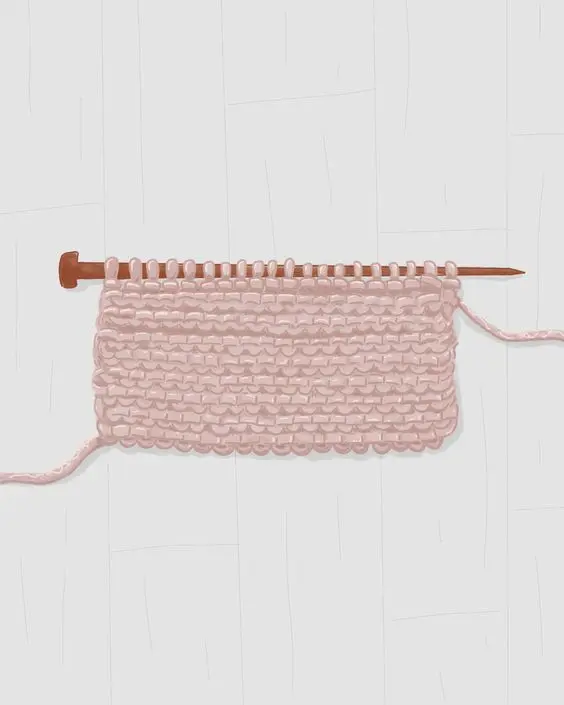
- Tutorial:
- Cast on any number of stitches.
- Knit every row. That’s it! Each ridge you see on the fabric represents two rows.
- Why it works: The Gartner stitch lies flat and adds thickness to the fabric, which cotton yarn holds well.
2. Stockinette Stitch
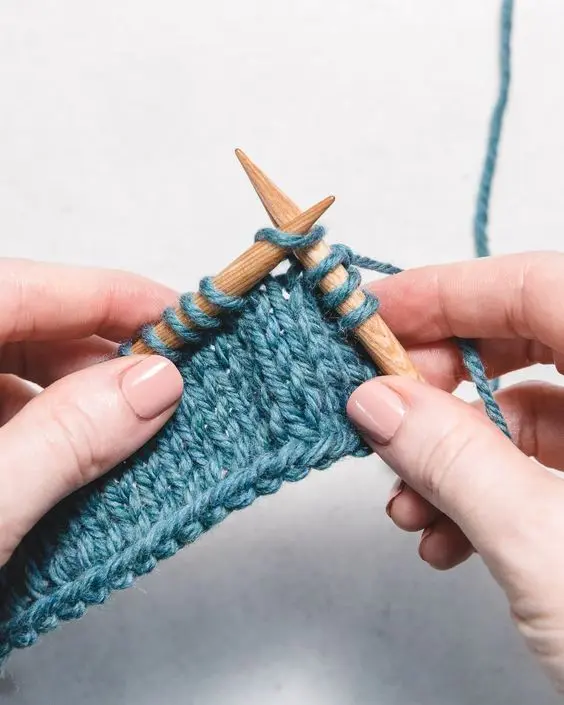
- Tutorial:
- Row 1: Knit all stitches.
- Row 2: Purl all stitches.
- Repeat these two rows for pattern.
- Why it works: Though prone to curling, the smoothness of the stockinette stitch showcases cotton’s crisp and clean stitch definition, making it good for garments.
Advanced Stitches Ideal for Cotton Yarn
1. Seed Stitch
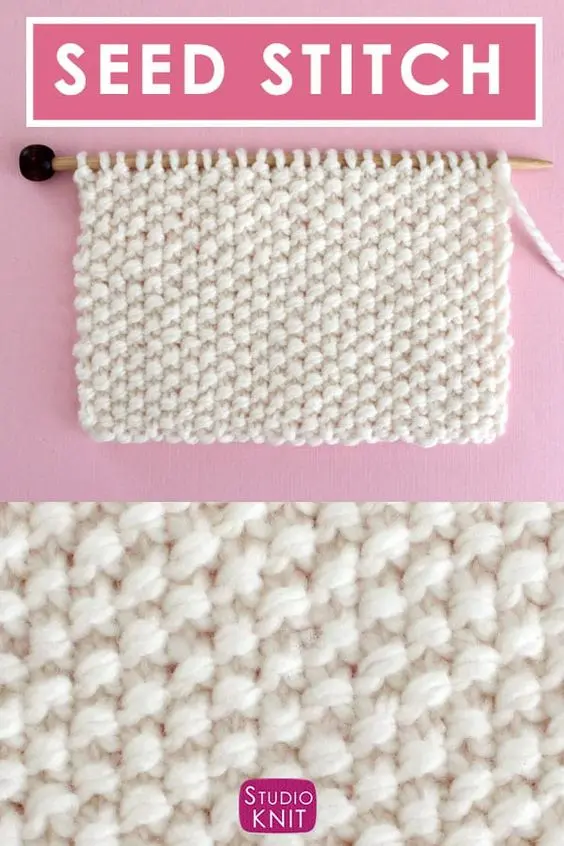
- Tutorial:
- Cast on an odd number of stitches.
- Row 1: Alternate knit 1, purl 1 across, ending with a knit 1.
- Row 2: Purl over the knit stitches and knit over the purl stitches.
- Repeat Row 2 for the pattern.
- Why it works: The texture of the seed stitch prevents cotton fabric from curling, making it perfect for edges.
2. Cable Knit
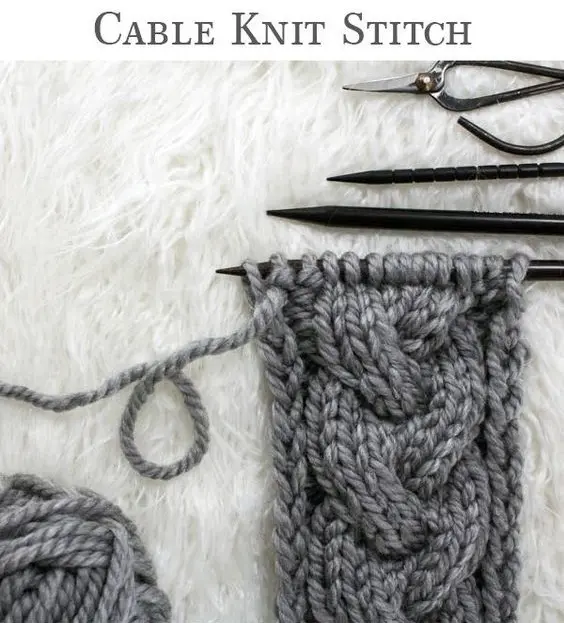
- Tutorial:
- This pattern requires stitches to be worked in multiples of 8 for a simple cable. Add a suitable border stitch count as needed.
- Rows 1-3: Knit the knits and purl the purls based on your desired rib or background pattern.
- Row 4: Cable row. Example, slip 4 stitches to a cable needle and hold in back, knit 4, then knit the 4 from the cable needle.
- Repeat Rows 1-3, then Row 4 for cables.
- Why it works: Cotton’s firmness helps to define and hold the twists of cable stitches beautifully.
Advice on Combining Different Stitches for Unique Patterns
- Planning: Start by sketching out your pattern or using a knitting software to visualize how different stitches will interact. Consider how each stitch contributes to the overall fabric properties, like drape and stretch.
- Contrast: Use a combination of simple and textured stitches. For instance, a background of stockinette or garter stitch can be dramatically enhanced by intermittent rows of seed or cable stitches.
- Sampler: Create a swatch that combines different patterns. This not only serves as a test but also as a template for larger projects.
- Borders and Edging: Incorporate border stitches like ribbing or moss stitch to add structural integrity and visual interest.
By understanding and utilizing these stitches, you can make the most out of cotton yarn for a variety of projects, ensuring both functionality and aesthetic appeal. Experiment with different combinations to find the perfect texture and pattern for your project needs.
Creative Project Ideas with Cotton Yarn
Cotton yarn, known for its versatility and durability, is ideal for a wide range of knitting projects. From beginner-friendly items to more complex creations, cotton yarn is a great choice due to its ease of care, breathability, and hypoallergenic properties. Here are some creative project ideas categorized by skill level:
Beginner-Friendly Projects
- Dishcloths and Washcloths: Start simple with rectangular dishcloths. Practice basic stitches like knit and purl or experiment with simple patterns and textures.
- Skill focus: Cast on, bind off, knit, purl.
- Coasters: Small and quick to make, coasters are perfect for experimenting with colorwork or incorporating simple lace patterns.
- Skill focus: Increases, decreases, yarn overs for basic lace.
- Simple Scarves: A step up from dishcloths, scarves allow beginners to practice stitch consistency and explore simple color changes or striping techniques.
- Skill focus: Consistent tension, basic color changes.
Intermediate Projects
- Summer Tops: Lightweight and breathable, cotton is perfect for summer garments. Simple tank tops or T-shirts with minimal shaping are great intermediate projects.
- Skill focus: Knitting in the round, basic increases/decreases for shaping.
- Baby Blankets: A larger project that’s still accessible, baby blankets can incorporate interesting stitch patterns, colorwork, or even simple lace or cable designs.
- Skill focus: Advanced stitch patterns, chart reading for lace or cables.
- Market Bags: Durable and practical, cotton market bags can be as simple or as complex as you’d like, incorporating lace motifs for stretchability or dense stitches for strength.
- Skill focus: Lace knitting, working in the round, strap construction.
Advanced Knitting Projects
- Intricate Lace Shawls: With cotton’s clean stitch definition, lace shawls can showcase complex lace patterns and openwork.
- Skill focus: Complex lace patterns, blocking to shape.
- Detailed Amigurumi Toys: While typically crocheted, knitted amigurumi toys in cotton can achieve great detail and durability for play.
- Skill focus: Small diameter knitting, intricate shaping, embroidery for features.
- Cabled Sweaters or Cardigans: Cotton’s firm texture makes it an excellent choice for showcasing intricate cable work in sweaters or cardigans.
- Skill focus: Complex cable patterns, garment construction.
Each of these projects can be adapted to your personal taste through the choice of colors, the combination of different stitches, or the addition of unique embellishments, such as beads or embroidery. Cotton yarn’s versatility and range of weights from light to bulky make it suitable for a wide array of knitted creations. When selecting your project, consider the characteristics of cotton yarn, such as less stretch compared to wool, which may influence your final product. Happy knitting!

